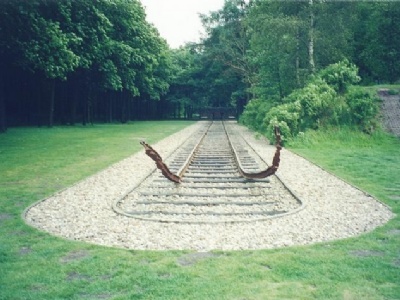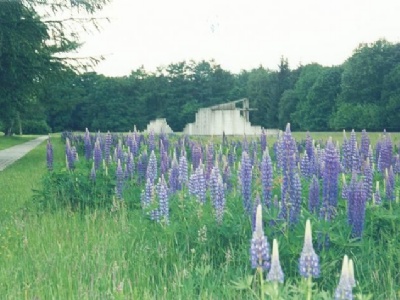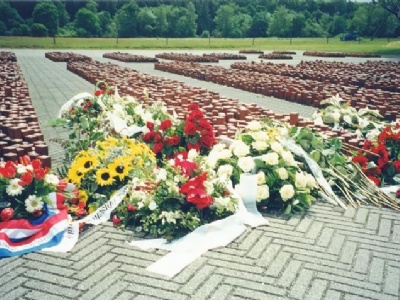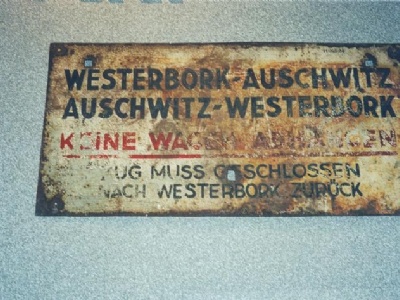Westerbork
Westerbork was a transit camp (Durchganglager) for Dutch Jews gathered by the Gestapo at various razzias around Holland. The camp was set up by the Dutch authorities in October 1939 to house Jewish refugees who had immigrated illegally to Holland. Until the end of 1941 there were no more than about 1000 prisoners in the camp, but when the Nazis decided that Westerbork would be used as a transit camp, thousands of Jews arrived, but also a small number of gypsies. Between July 1942 and September 1944, 93 trains departed from Westerbork, usually on Tuesdays, with just over 1,000 people bound for Auschwitz or Sobibor. More than 80 percent of the Dutch Jewish population was murdered in one of these camps. A total of 105,000 Jews were deported from Westerbork.
While waiting for deportation, some of the prisoners had to work within the part of the camp that produced war material. The camp was built as a concentration camp with barracks for prisoners, SS personnel, labor barracks, penal barracks, etc. The conditions in the camp were acceptable compared to other camps because the Nazis wanted to hide the true meaning of the camp. In cases where prisoners were guilty of some form of crime and were to be punished, they were sent to another camp. Westerbork was liberated on April 12, 1945, when only about 850 people remained in the camp. It was to Westerbork that Anne Frank and her family were deported after they were betrayed and revealed at their hiding place in Amsterdam in early August 1944. Barely a month later, on September 3, 1944, the whole family was deported to Auschwitz and was the last transport to leave Westerbork with destination Auschwitz.
Current status: Demolished with museum (2000).
Address: Hemeloor, 9433 Zwiggelte.
Get there: Car.
Follow up in books: Gilbert, Martin: The Holocaust: A History of the Jews of Europe During the Second World War (1987).








Westerbork served after the war as a temporary prison for Dutch collaborators before it was demolished in the early sixties. Today, some fences, watchtowers and barracks have been partially reconstructed in the former camp area. One of the reconstructed barracks is said to have been where Anne Frank was imprisoned during her stay in the camp. Just outside the camp is the commandant’s villa preserved and it is now glazed.